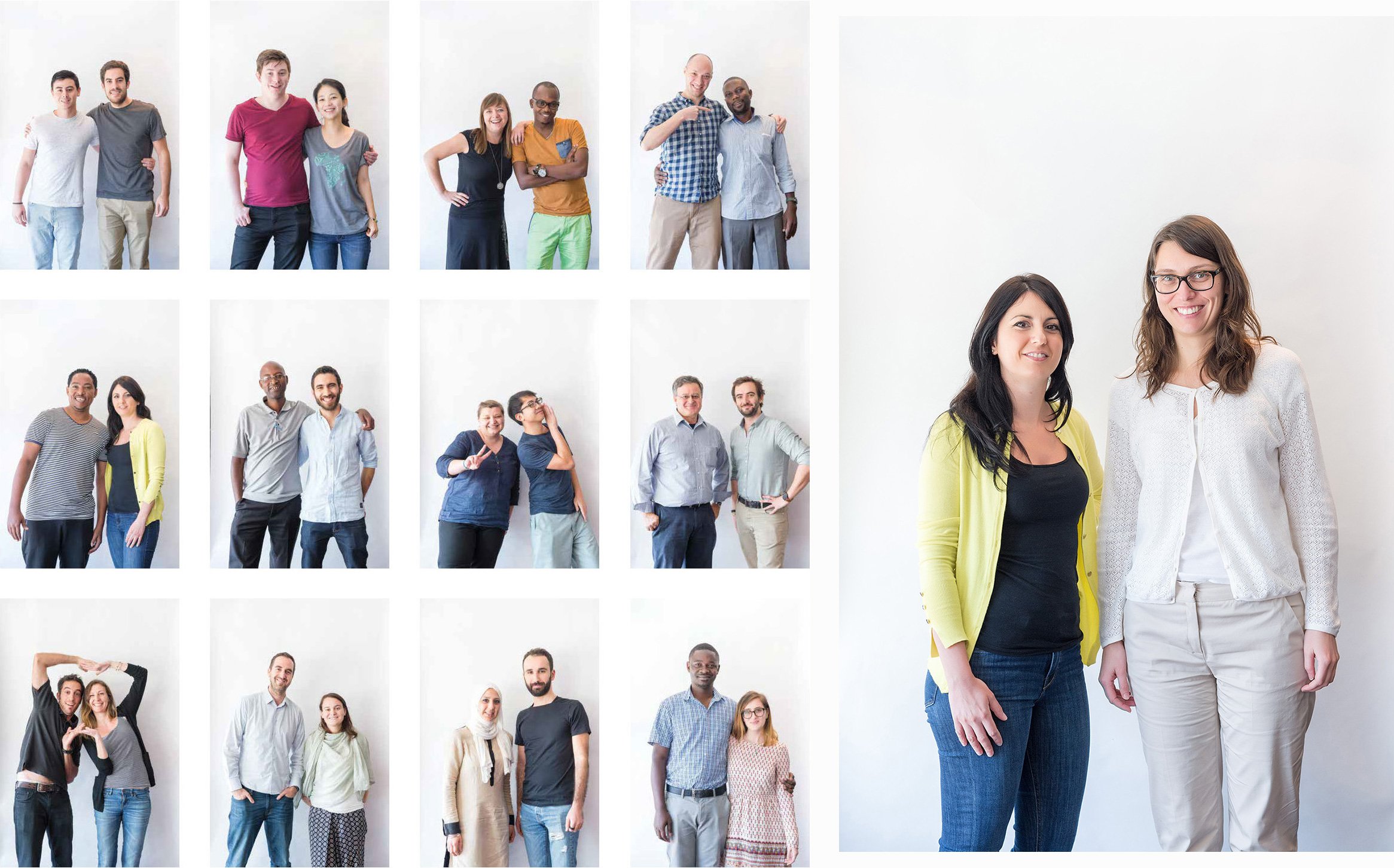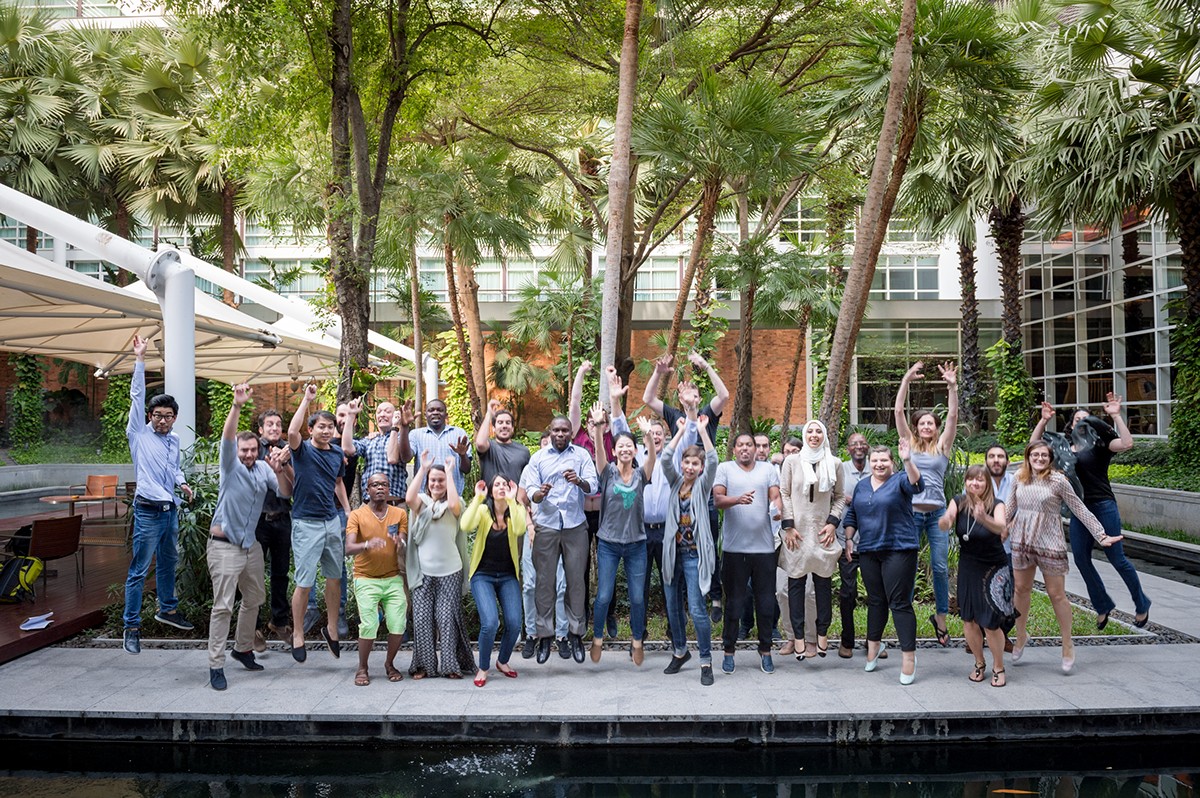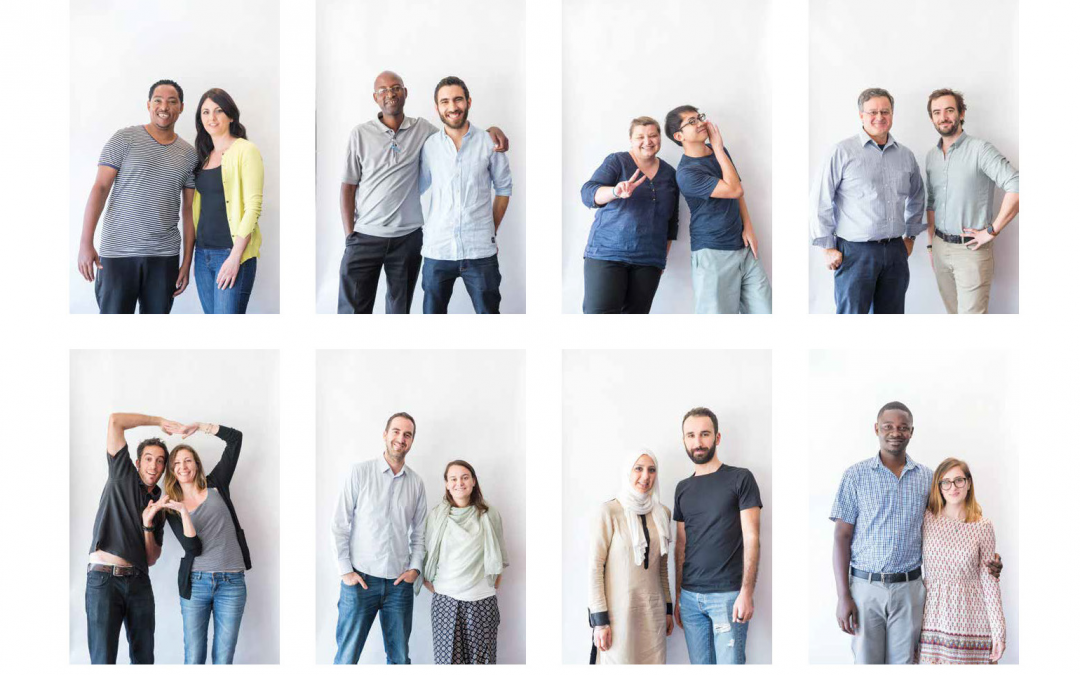When talking about innovation a lot of people focus on technology, the latest buzzword (drones, artificial intelligence, data, among many others that you already know), or how we must work better with the private sector and explore new partnerships. One area that we often overlook, is the people behind innovation within our own organization. These people have existed long before an Innovation Service or Lab was established and are in the field managing the day-to-day challenges. For us, innovation starts with people, whether those people are persons of concern or UNHCR staff and affiliates.
This is why one of the main pillars at UNHCR’s Innovation Service is our Innovation Fellowship. Over the past three years, nearly 60 UNHCR staff and affiliates have participated in the year-long training program through a competitive application process. Innovation Fellows embody the creativity and diversity of the work we do at UNHCR, working in field operations around the world and representing a range of nationalities, skills, and expertise.
Over the course of the year, Innovation Fellows define a challenge unique to their field operation or divisions, and develop, test, and prototype a solution to address the challenge. They are trained in human-centered design and prototyping principles and are connected to internal and external support for refining their solutions. The program also aims to facilitate longer term change management as it encourages Fellows to be innovative in their current and future roles within the organization.
Another 25 staff have started their journey with the 2017 Innovation Fellowship, where they will have the opportunity to facilitate innovation in their operation with colleagues as well as directly with refugees. The Fellowship is broken up into phases that we call “Gates” that essentially follow the process of innovation that we advocate for at the Innovation Service.
This year we’d like to bring you along the 2017 Fellowship cohort’s journey, highlighting their successes, failures, and challenges along the way. We will bring you their stories through new interviews, videos, and updates throughout the year. We are doing this to bring transparency not only to the Fellowship itself (which is by no means a perfect process), but also new insights into what it is like to be pursuing innovation within UNHCR. Driving innovation within any organization is not easy, but especially within the humanitarian sector, where buy-in and bureaucracy can quickly shut down new ideas and processes.

Our 2017 Innovation Fellows have now completed their initial week of training in Bangkok and passed their first Gate, which is focused on defining a challenge within their operation. Below we’ve outlined some of the trends we’re seeing with our Fellows and speak with two colleagues on their lessons learned in the first two months of their Fellowship journey.
This is where the Fellows are now:
Gate I: Challenge Definition
The goal and main output of Gate I was to define a challenge. An often-overlooked aspect of the process that is crucial to moving forward effectively within the Fellowship.
Framing a challenge is one of the most critical steps in an innovation process. Doing it properly helps Fellows stay on point and determine the true focus of their Innovation Fellowship. Defining a challenge is about identifying the right problem to solve. We asked Fellows to get outside their comfort zones (and away from their desks!), observe what people are really doing, get involved, engaged, and ask a lot of questions. Defining a challenge is no easy feat and even though Fellows must submit an initial challenge statement, it’s likely this will change several times before they’ve identified the right problem.
After reviewing the initial submissions these were the key trends in documentation submitted:
- Everyone agrees we need to be more efficient, more effective, and more focused on measuring impact in refugee assistance.
- Information management and managing data, in general, has a lot of challenges at all levels of the organization
- We need to be better at providing two-way communication opportunities for refugees
- There are a lot of opportunities to innovate around organizational processes – particularly relating to human resources, communications, and procurement. Innovation Fellows are eager to challenge the status quo of these processes.
We have also asked two of our Fellows to give you insights into what being a Fellow in practice looks like during the first Gate.
Meet Assanke and Marina: 2 Fellows with different perspectives.
1. What led you to identify your specific challenge for the Fellowship?
Assanke: I identified the challenge for the Fellowship through discussions with different members of the Joint IDP Profiling Service (JIPS) team, as well as discussions with practitioners in the field and experts at the global level. For the past few years, we have always been struggling within the JIPS team on how we can improve a profiling exercise for the communities concerned, and how to make communities better participate as part of the profiling process. The Fellowship will allow us to ideate and prototype concrete methods, tools or guidance for profiling practitioners to collaborate and communicate with communities.
Marina: In December 2016, the National SGBV working group (SGBV WG) for Greece was preparing its Annual Work Plan. Some of the NGOs raised the need of more accountability towards affected population for what concerns the SGBV service provision. Whilst brainstorming on how to achieve this goal, it was put on the table the idea of having persons of concern directly evaluating services. At that time, none of the WG members was aware of any successful experience on the topic, notably in the Greek context. As chair of the WG, I took the challenge from the members, and I decided to take it forward for my innovation fellowship. Following the innovation workshop in Bangkok, where I have the chance to meet so many creative, open minded and bright colleagues, I exchanged with some of them the challenge I had in mind, and I discovered that there was some interest on it. Therefore, I resolved to proceed with it.
2. What has been most surprising about the Fellowship during Gate I?
Assanke: The most surprising aspect about the Fellowship so far has been to engage with the community in the empathizing phase, and to better understand the context of the challenge. We organized a workshop in one of the camps around Sittwe, Myanmar, to understand the community participation context of the relevant camp populations in order to identify best possible ways to feedback results of the profiling exercise to the population. The workshop showed that there is significant interest from the community to understand the findings from the profiling exercise and to learn and discuss how this would improve their situation. The workshop also identified a number of preferred and trusted communication channels, for example, community groups were seen as a transparent forum allowing for interaction between humanitarian organizations and the community. It was “surprisingly helpful” to better understand what is important to the community, what they need and feel, which will give us directions when ideating solutions.
Marina: Definitely the most surprising thing was related to my inner mindset, and to discover I could also be a creative and innovative person, as I have always considered myself quite a traditional person. After the workshop, I really acknowledged my inventive skills and I enhanced them in several aspects of both private and professional life. Now I know that everybody could be an agent of innovation. The second most surprising thing was to realize how much fun you could have when innovating!
3. What has been the most challenging aspect of Gate I?
Assanke: The most challenging aspect of Gate 1 was to define a good challenge statement. When brainstorming the statement together with the team, we noticed it was challenging to come up with a statement which was not including already a solution.
Marina: The direct evaluation of service provision to respond to SGBV is meant to be done by survivors or persons at risk of SGBV. This is a great challenge, as there are several risks connected to it. Before deciding whether to engage in this, together with the SGBV WG members, we had a thorough discussion on the pros and cons about it. The main difficulties we identified were related to the possible breach of confidentiality and the potential re-traumatisation of the survivor, as well as the risk of raising expectations among people forced to flee that things might be improved immediately. At the same time, great benefits were recognized: accountability was definitely the main one, together with the issue that having survivors voices heard might enhance their recovery and healing process. Therefore, the SGBV WG members agreed to move to the next step and explore methodologies that could minimize the risks whilst maximizing the benefits of the challenge. If an appropriate methodology could be found, during the ideation step, the prototyping phase could start.
4. What are the next steps you want to take in your Fellowship?
Assanke: An important next step to take in the Fellowship is the ideation and prototyping phase. Now we have a better understanding of the community participation context, a next step will be to work with the team in Myanmar on further idea generation, and to test out concrete methods in the analysis and validation phase of the profiling exercise. In addition, my plan is now to also work with other country focal points within the JIPS team on ideating and prototyping methods for other operations (for example Sudan, where a profiling exercise is about to kick off).
Marina: One month after submitting the challenge for Gate I, I organized a workshop with the SGBV WG members to proceed in the phase of idea generation and prioritization. Around 40 ideas and methodologies were proposed by the participants. Some were quite traditional, such as questionnaires or focus group discussions, even smiley faces buttons at the exit of the service provision. Some others were based on existing psychotherapy techniques, such as drama, art, or storytelling. All the ideas were explored in terms of impact and do-ability. Finally, a couple of ideas were prioritized for the following phase: prototyping. Among those, shadowing of a service provider by a client was identified as the most appropriate, taking into consideration the risks and the benefits involved in this challenge.

The 2017 Innovation Fellow cohort after an intense week of training in Bangkok, Thailand.
At UNHCR Innovation, we love using the below famous quote by Albert Einstein to guide Fellows through Gate I of the Fellowship.
“If I had an hour to solve a problem, I’d spend 55 minutes thinking about the problem and five minutes thinking about solutions.”
It’s easy to define a Challenge that is already based on a solution you may want to explore or to have a lot of assumptions that lead you to that Challenge. What we continually witnessed is that the first few months after the Bangkok workshop are often the most difficult, as Fellows settle back into their operations while also attempting to bring this mindset change into the work they do. There’s a lot of opportunity for change and growth within the next few months, and we’re excited to see where Gate II will take them.
Have you experienced similar difficulties throughout the process of innovation? Send us your stories at [email protected] and stay tuned for more updates on the 2017 cohort.
If you’d like to repost this article on your website, please see our reposting policy.

